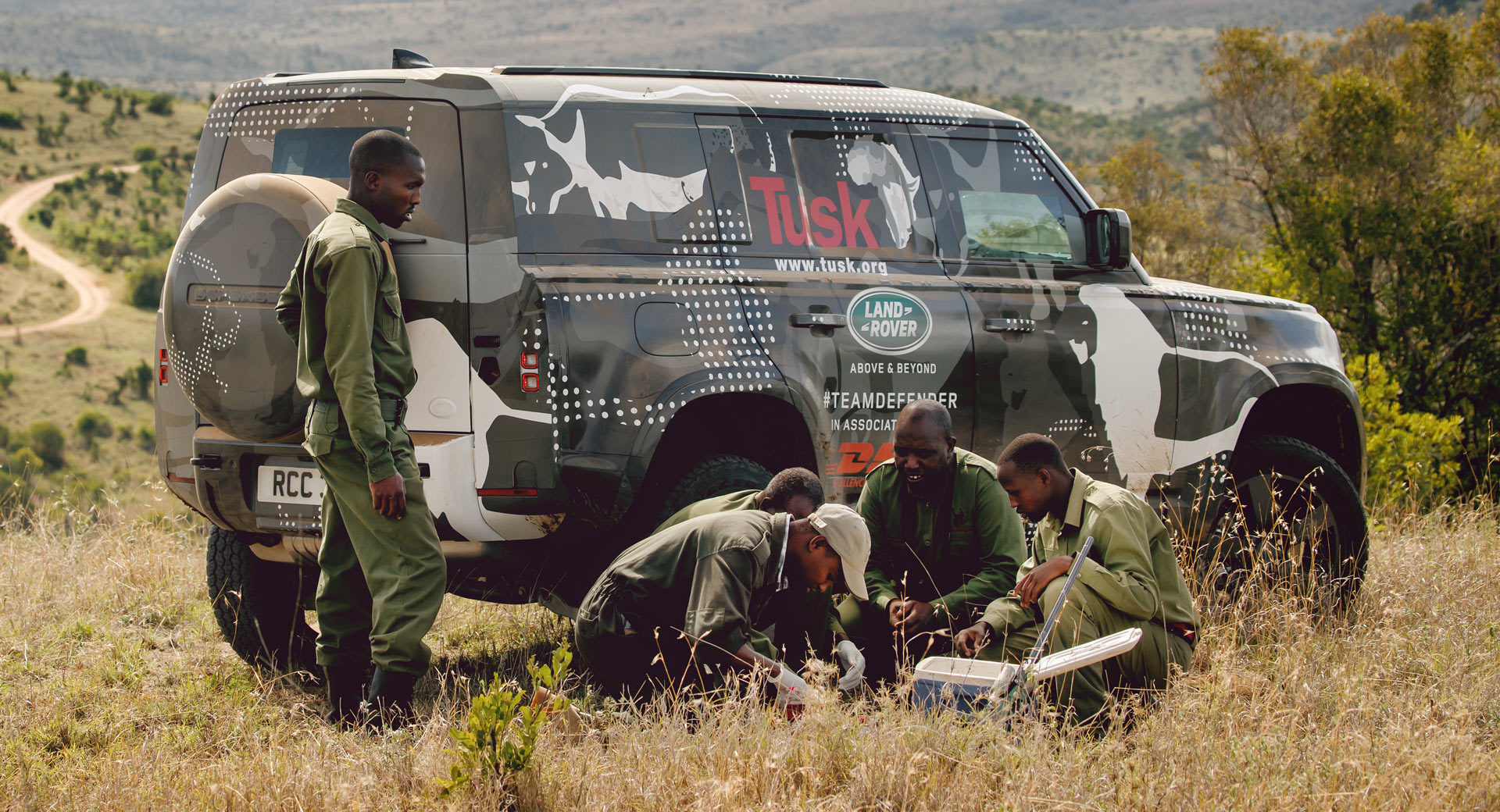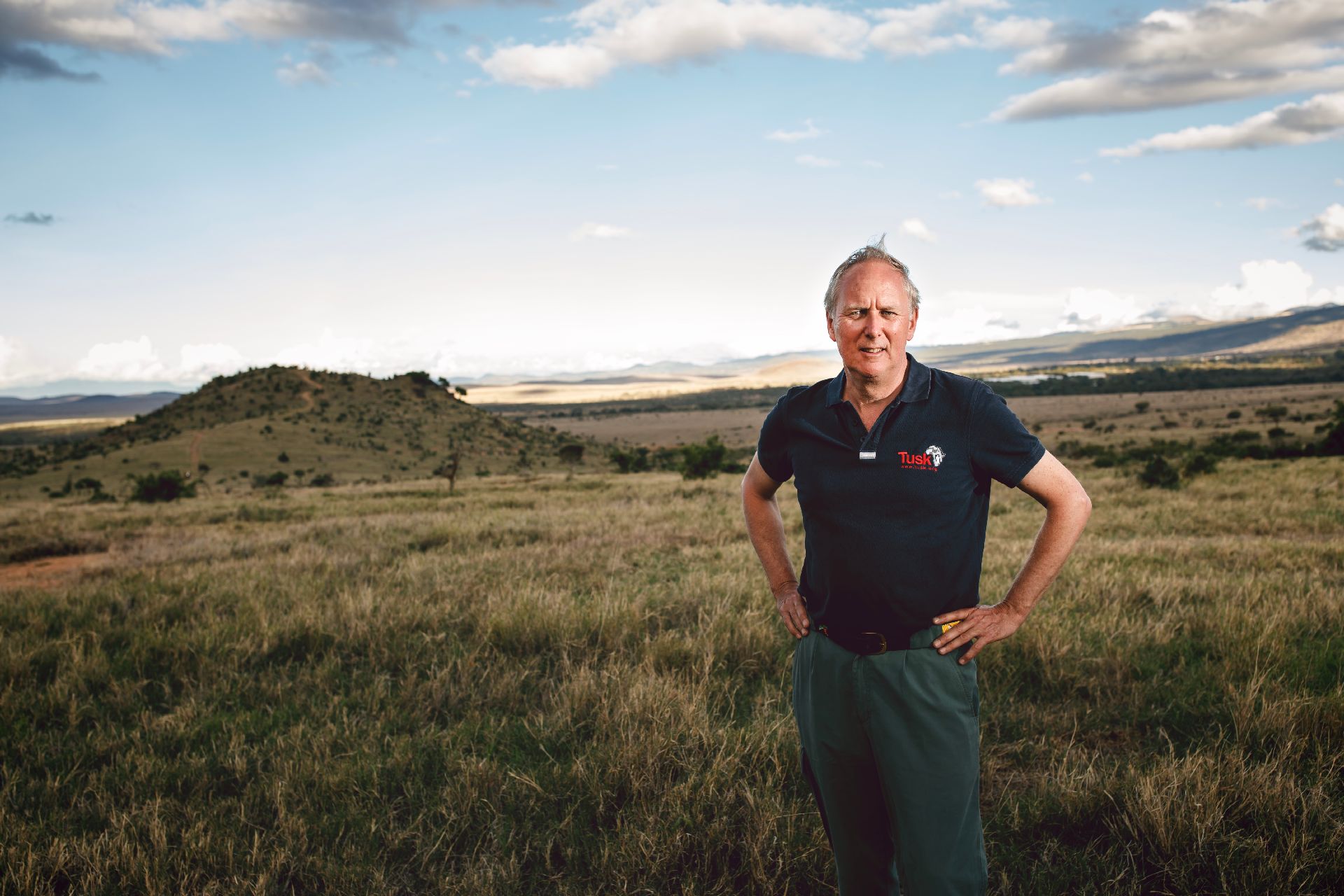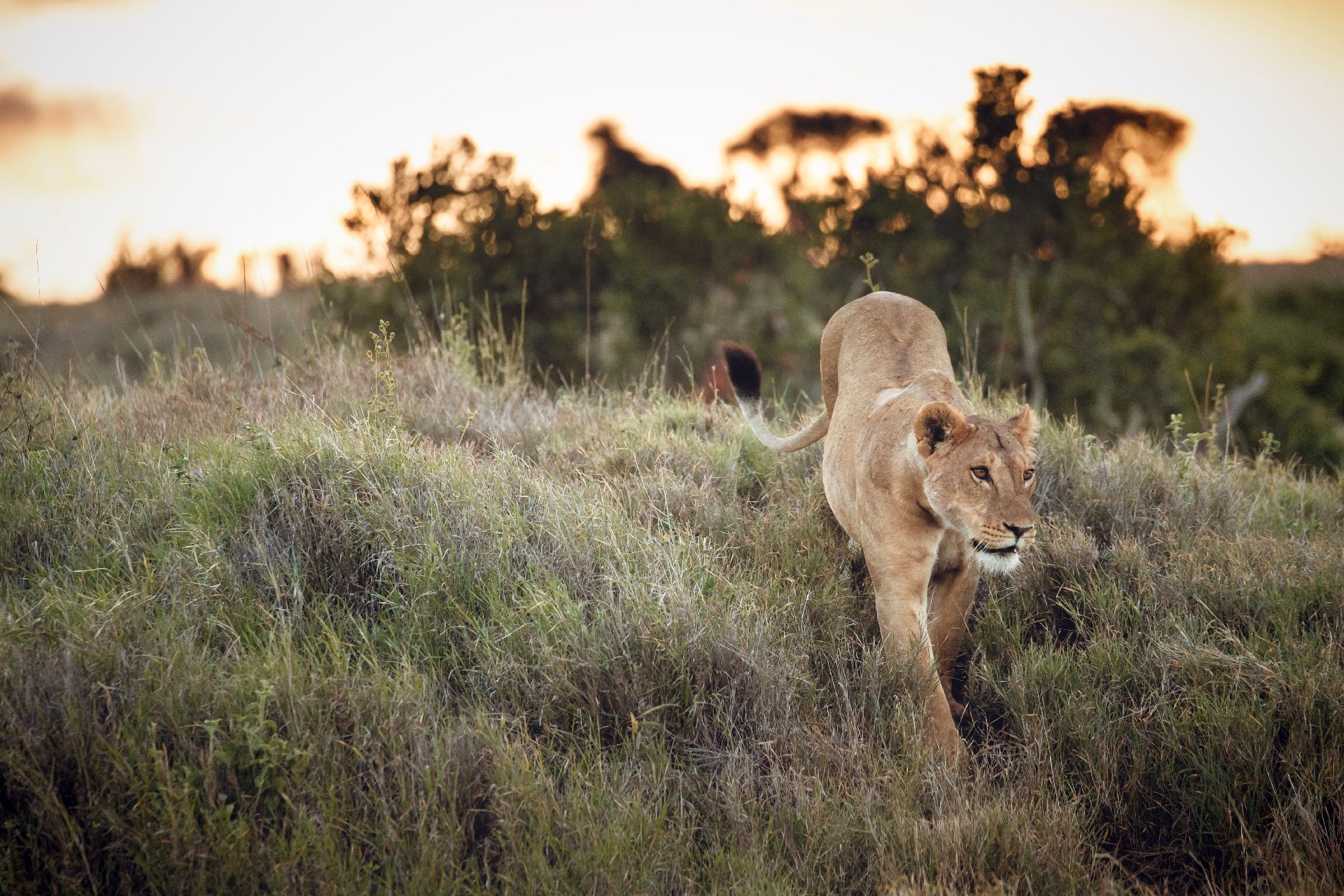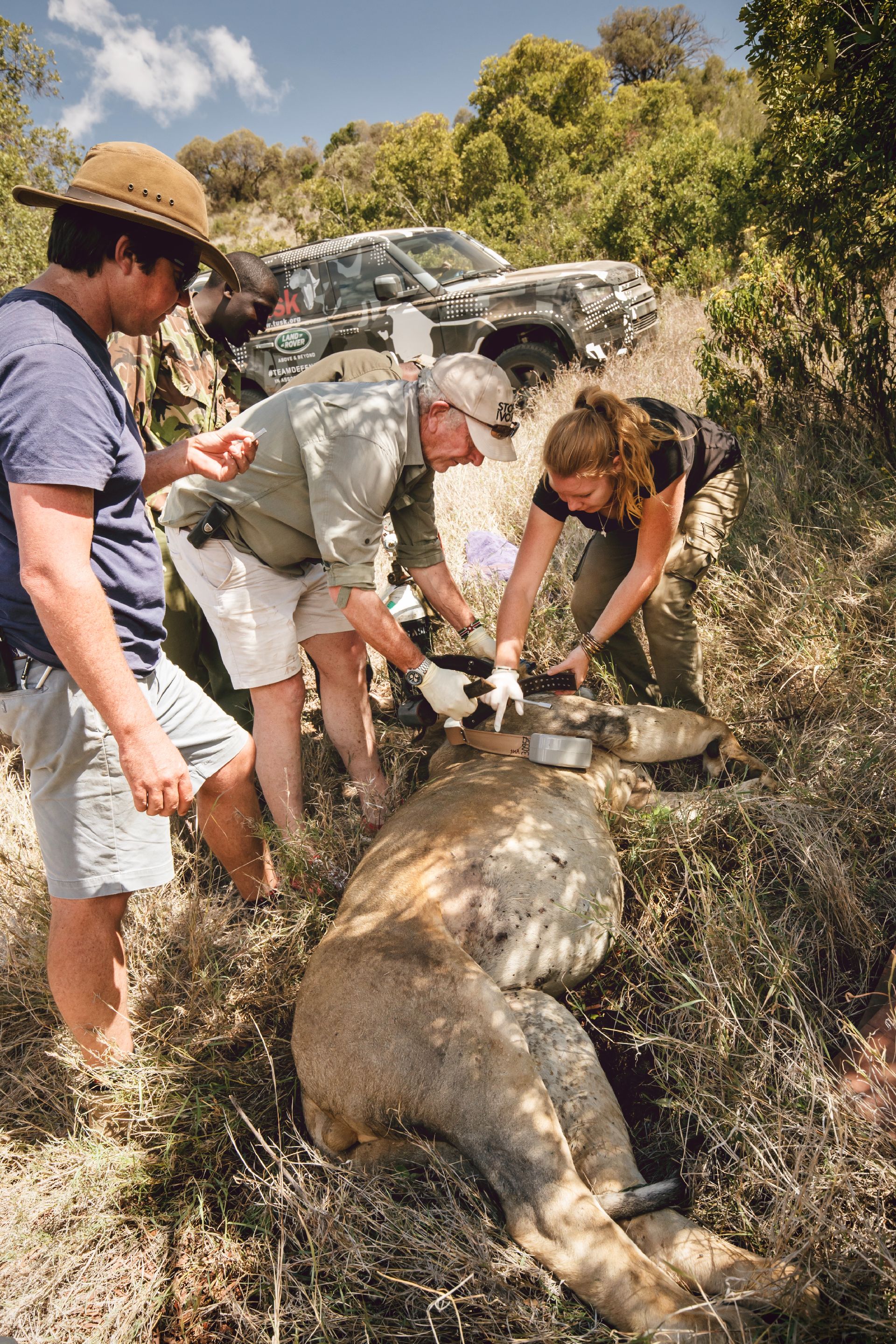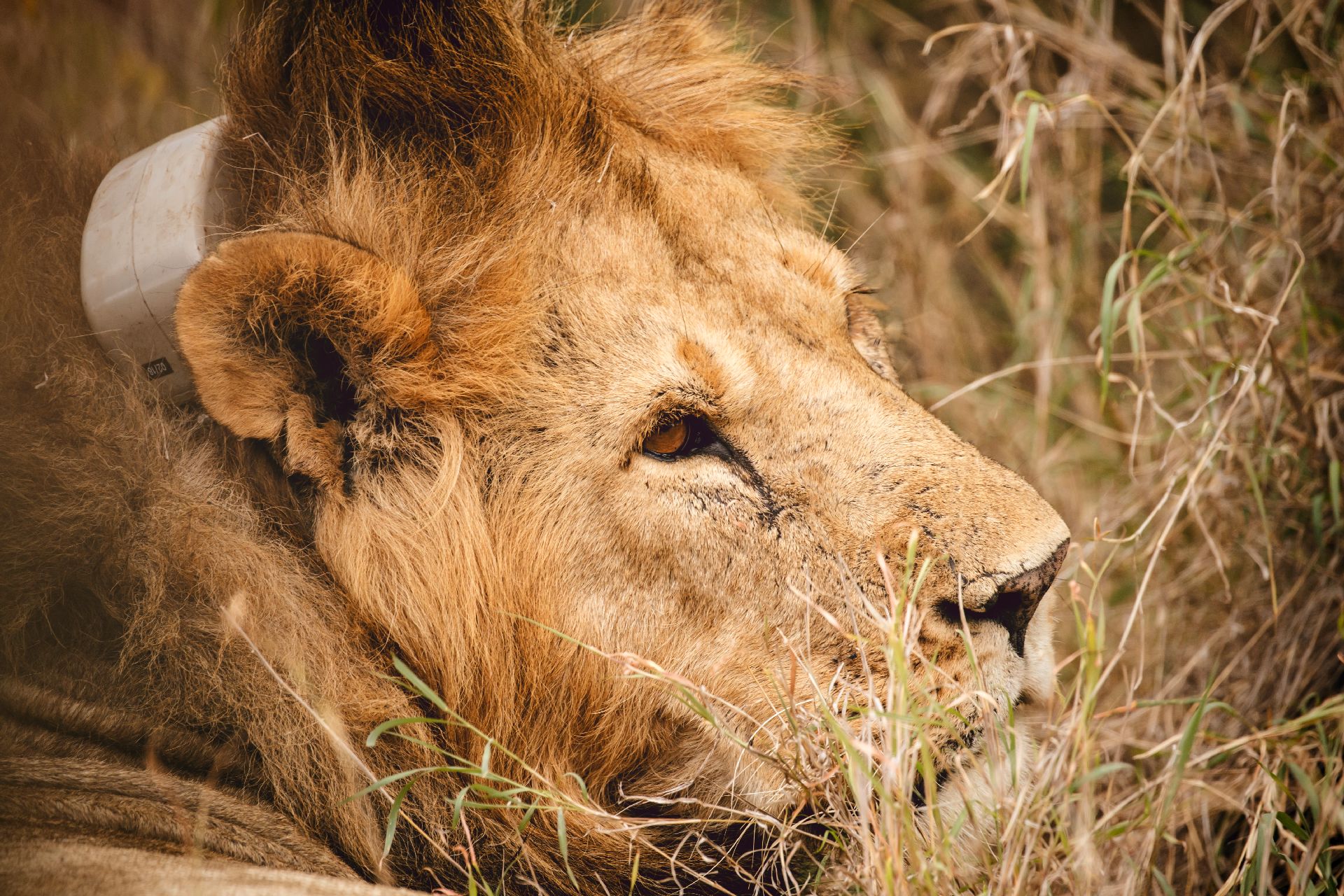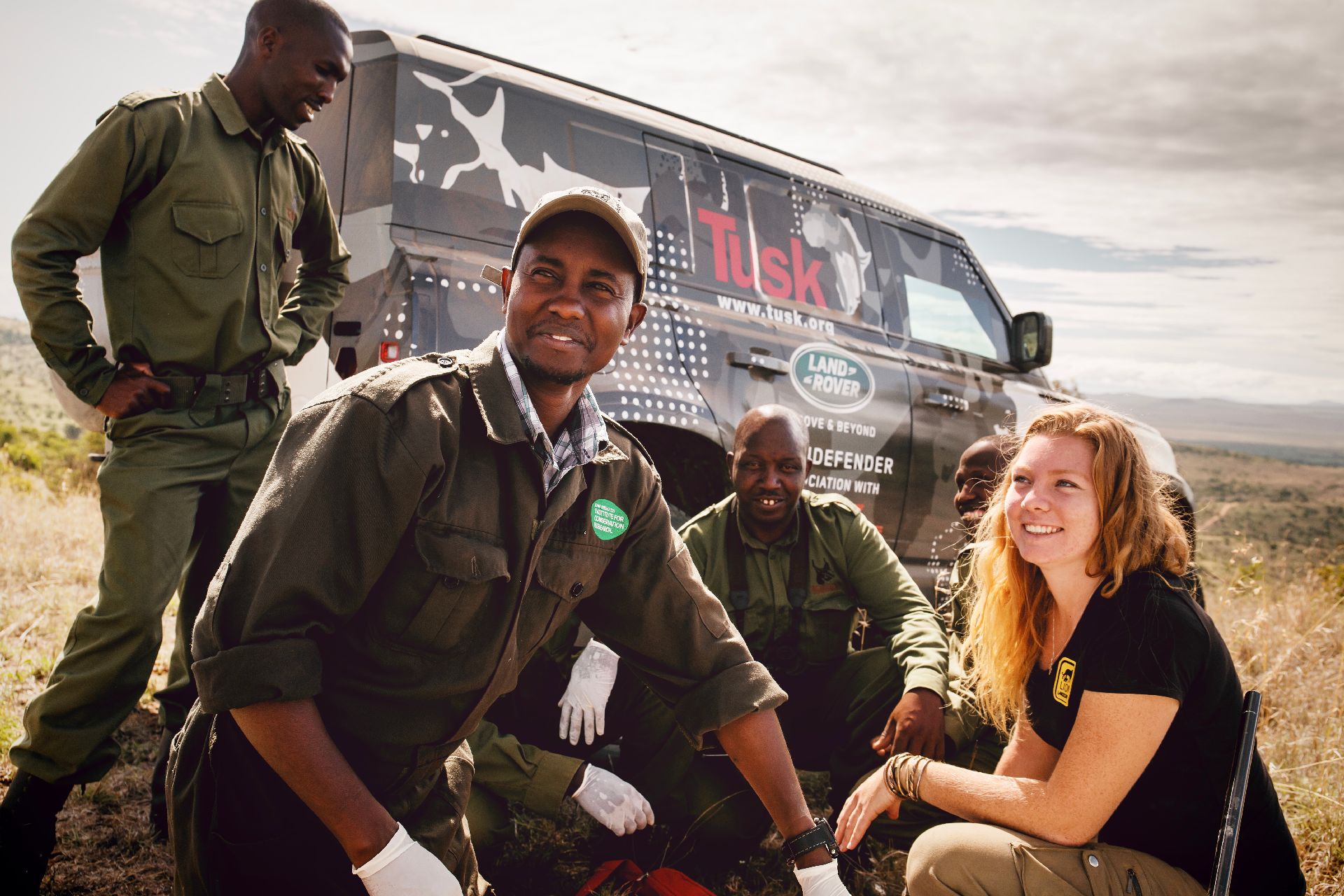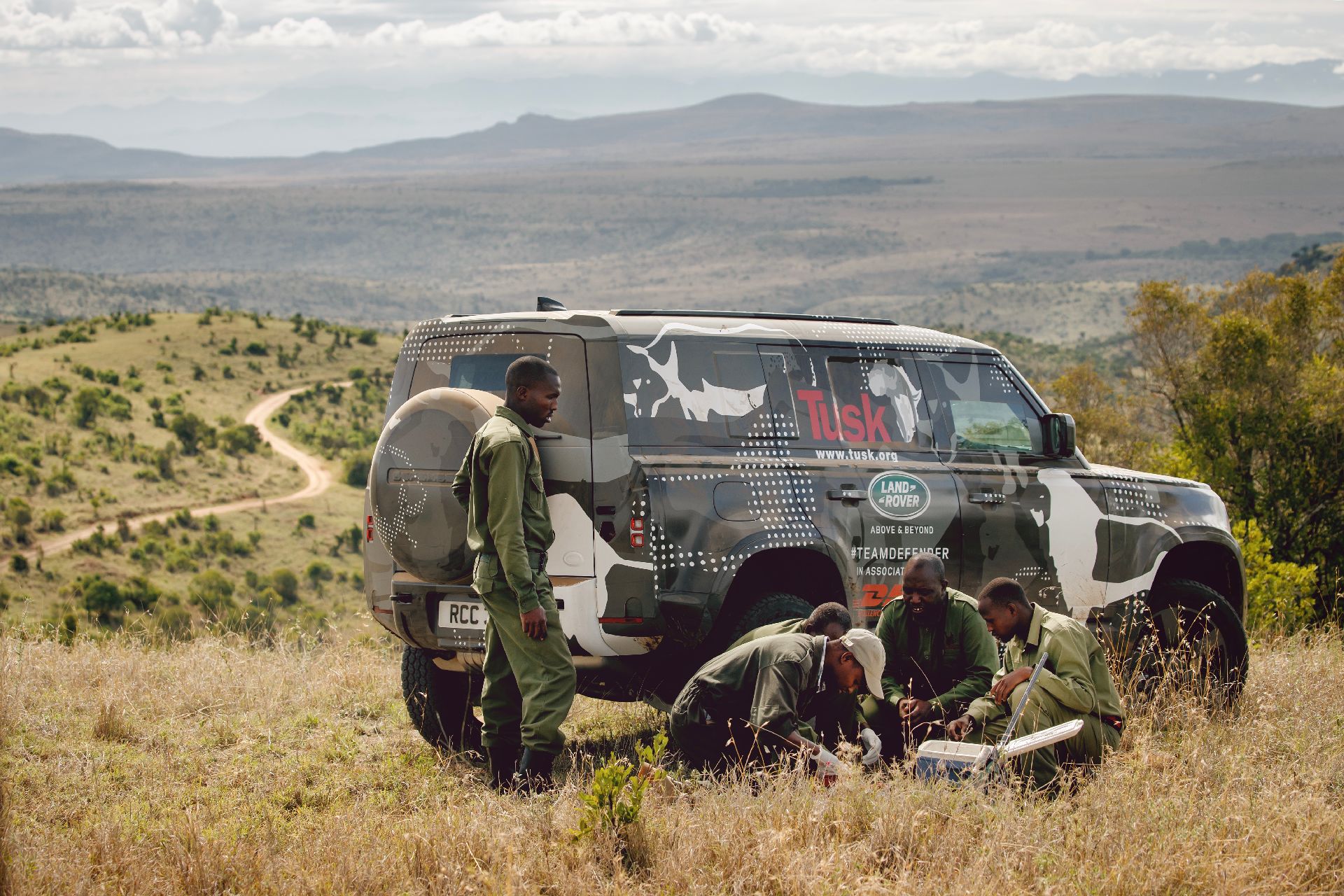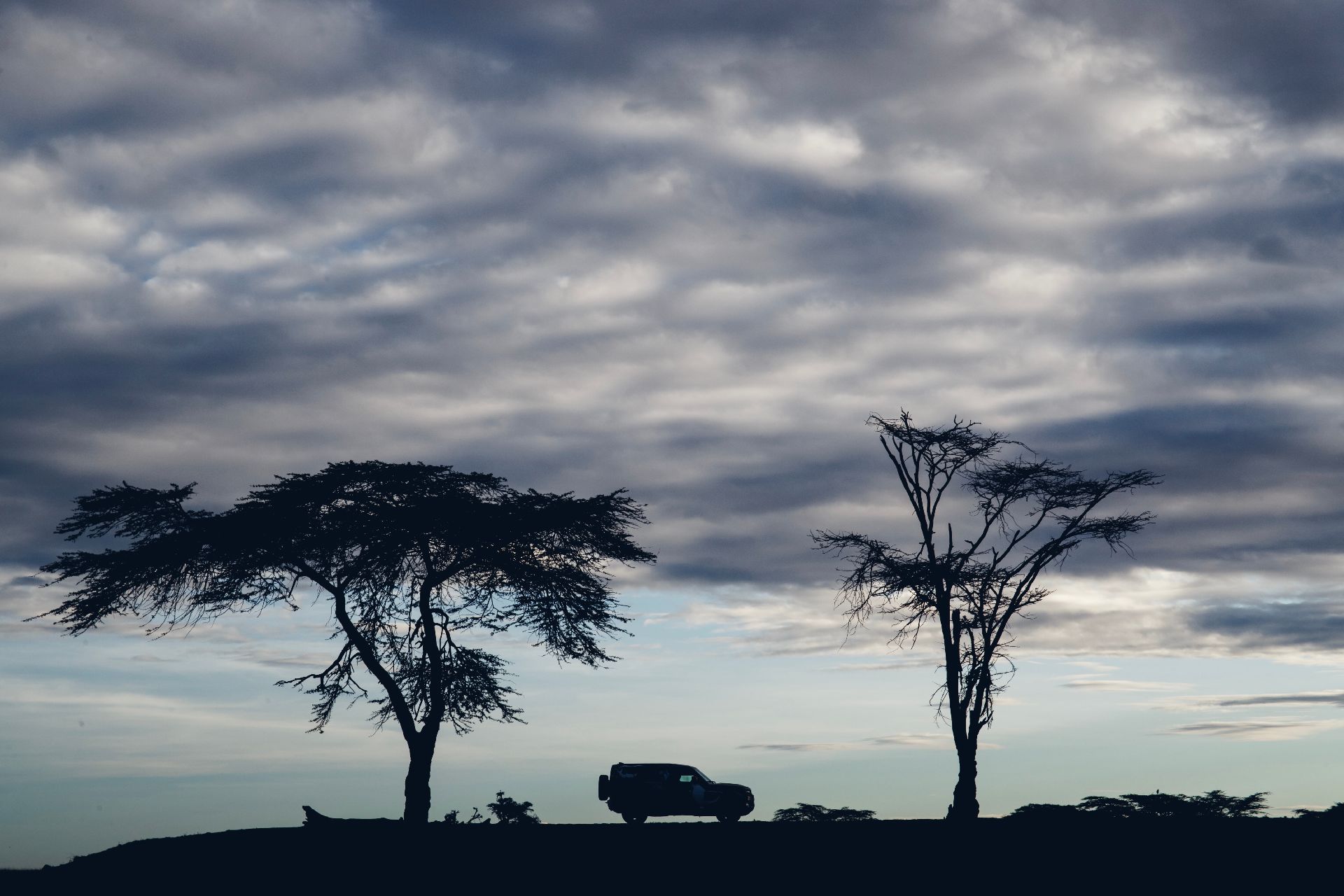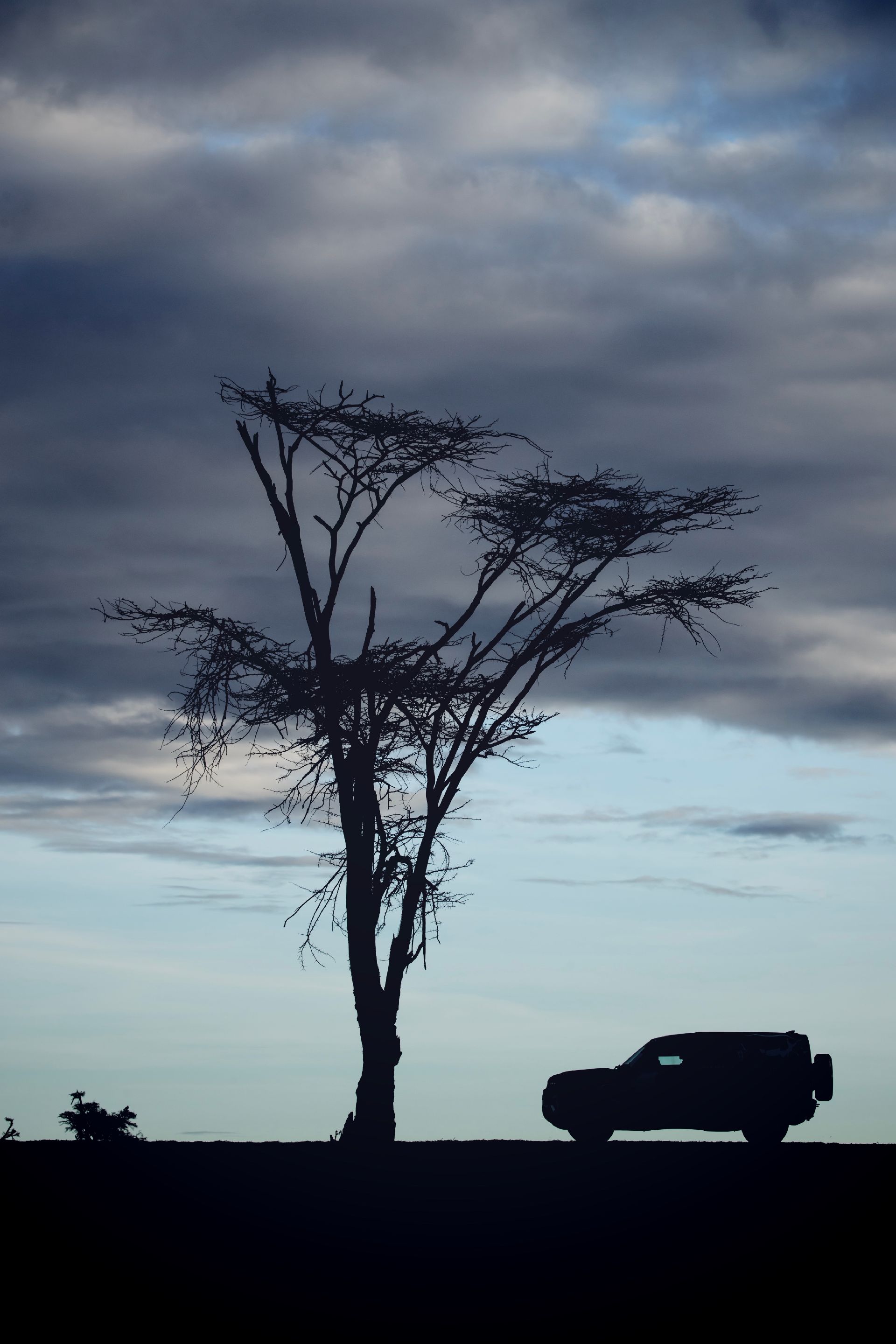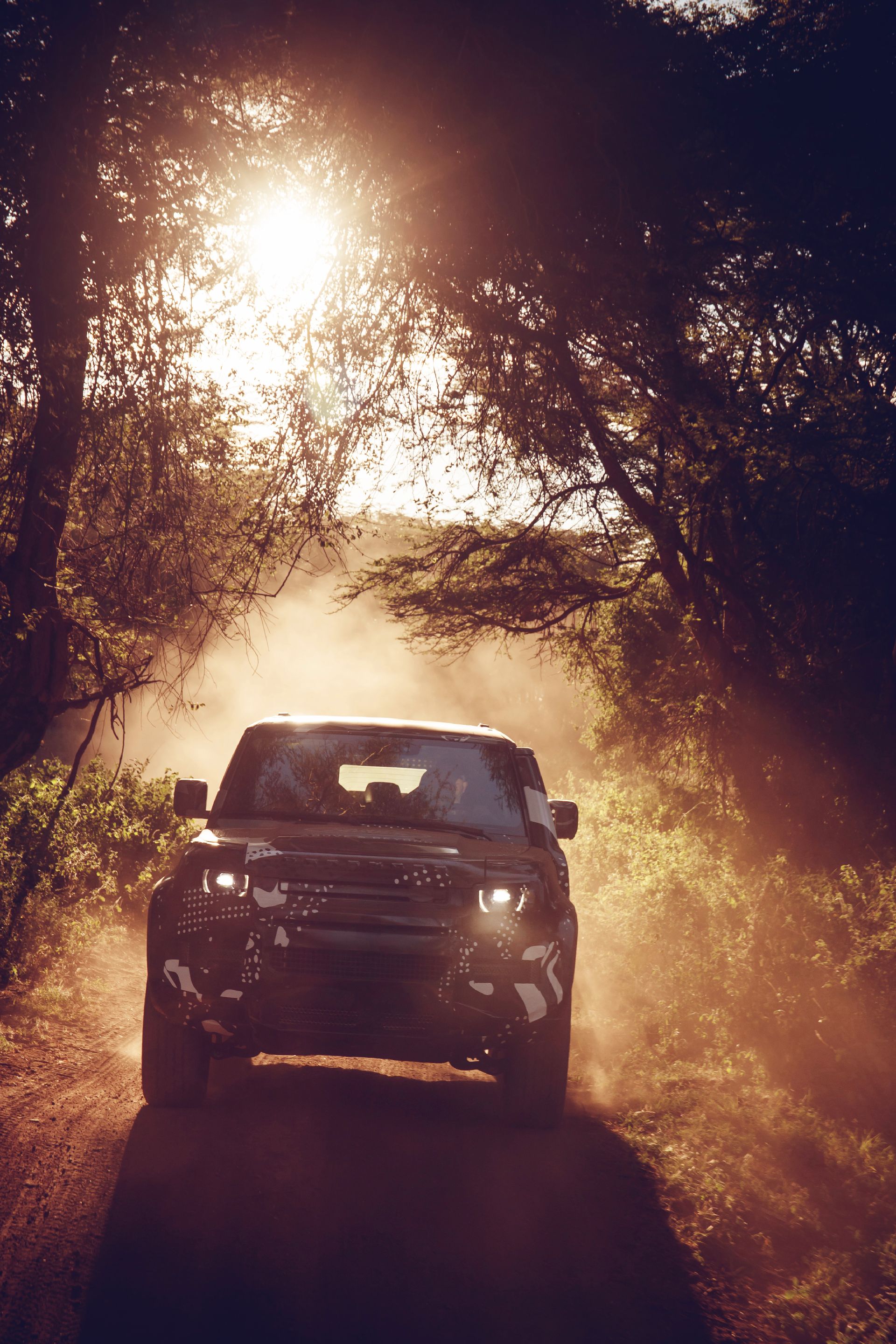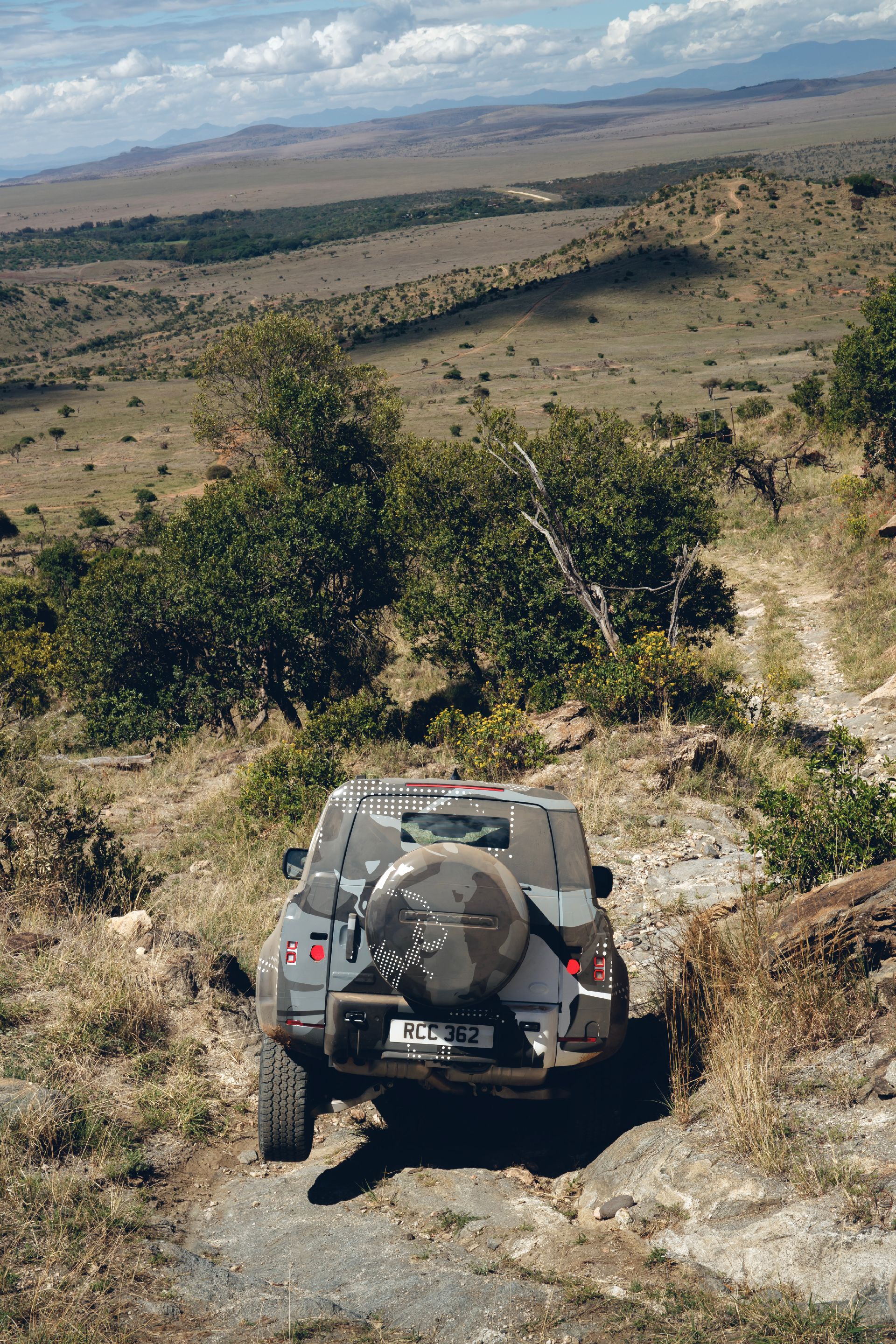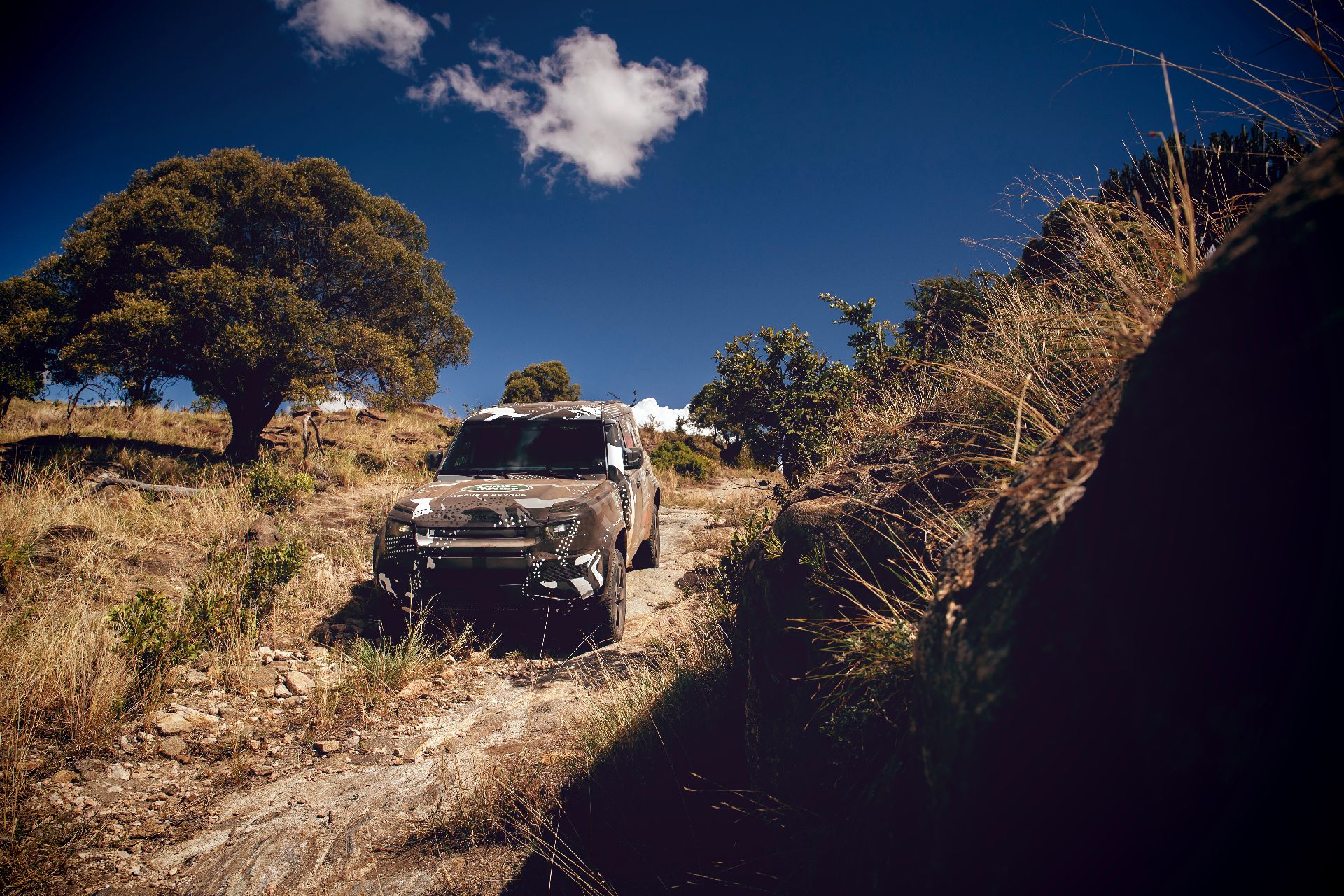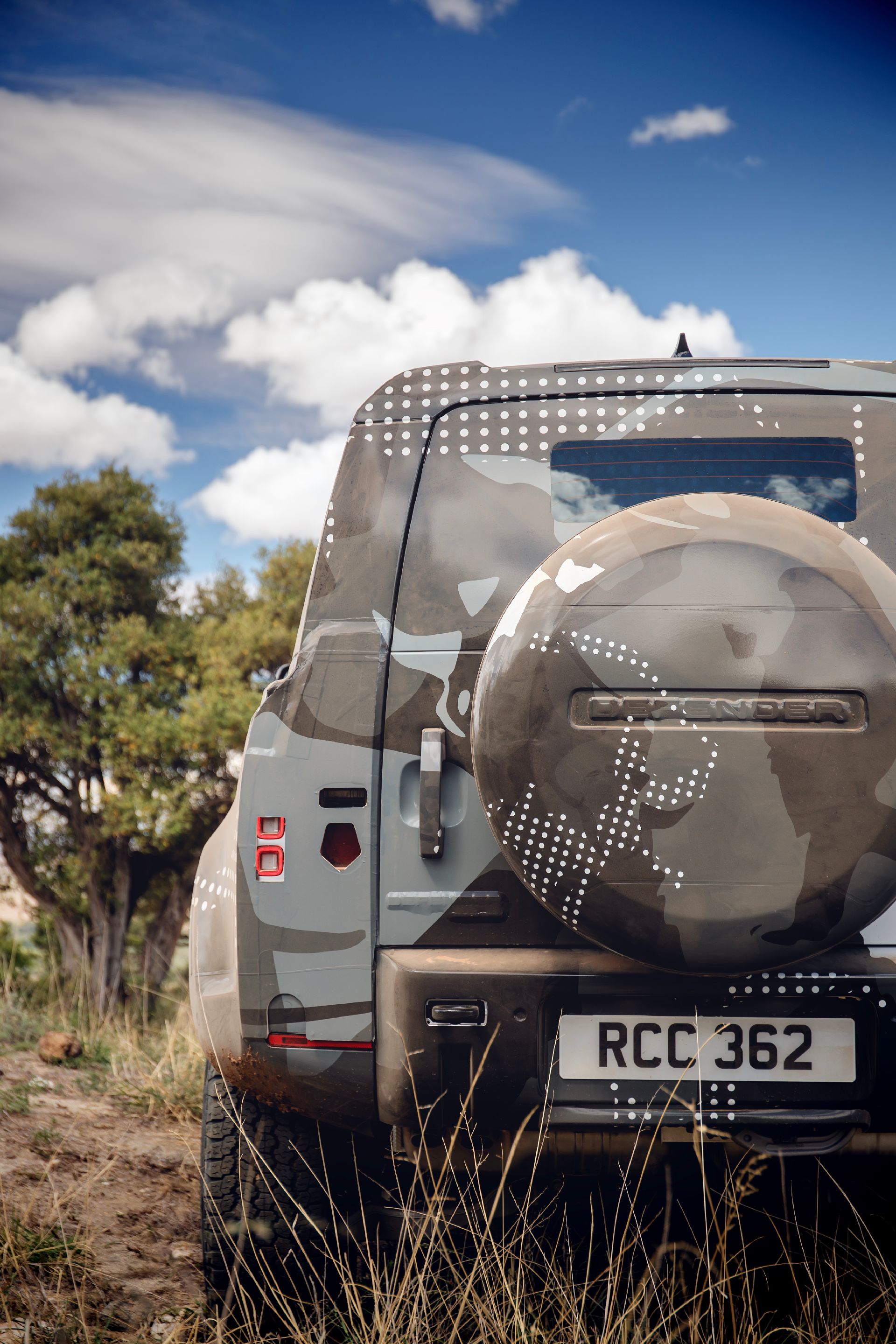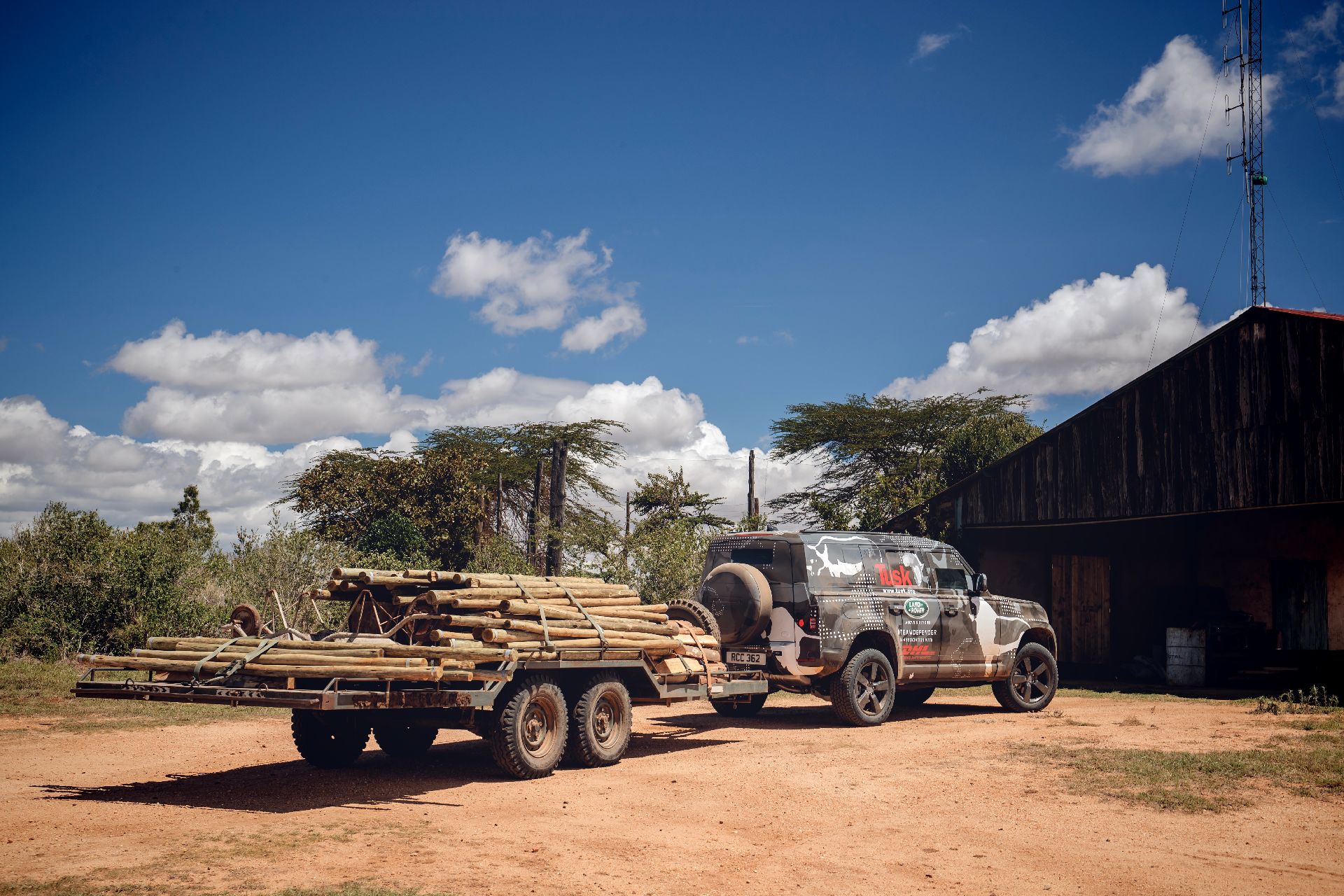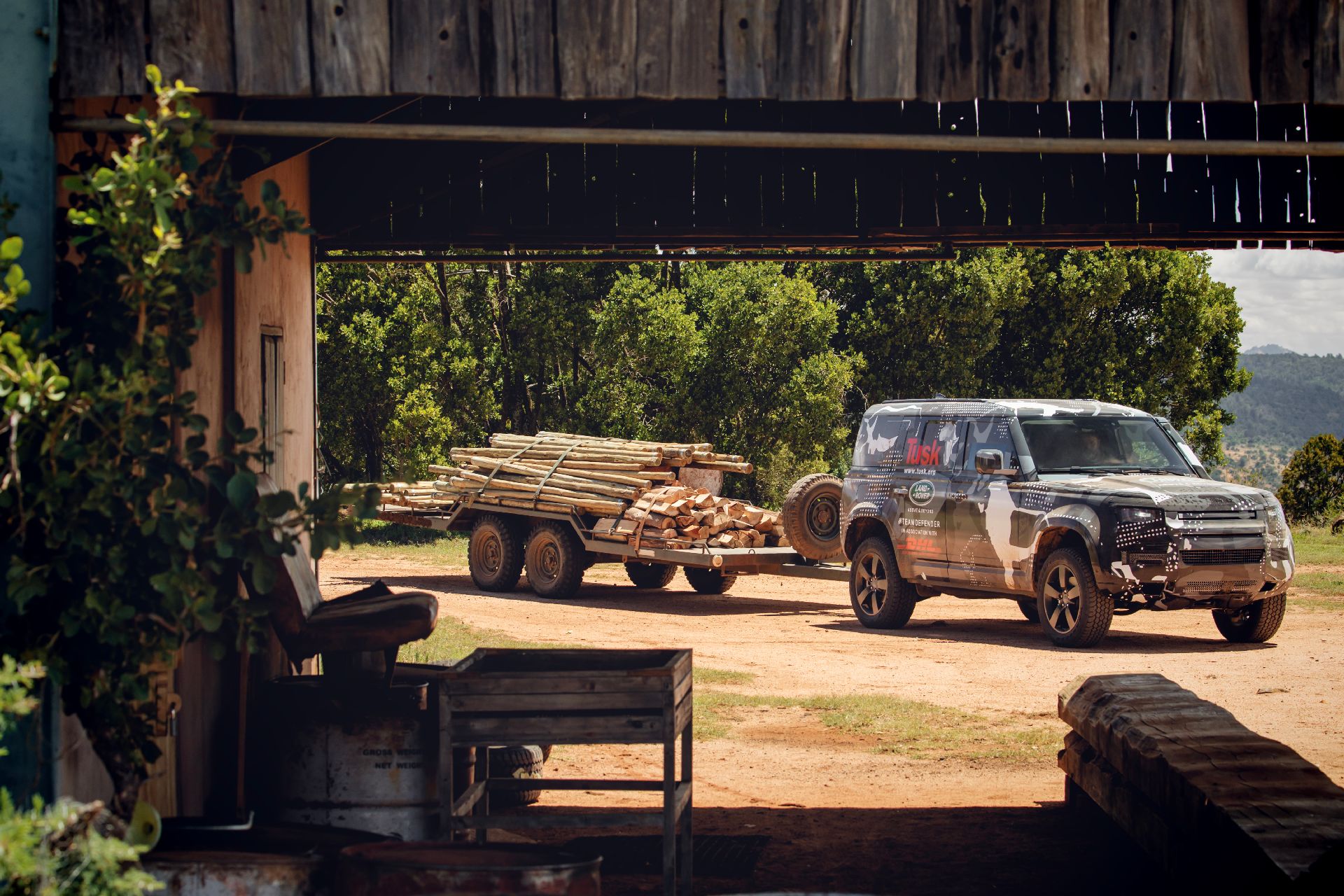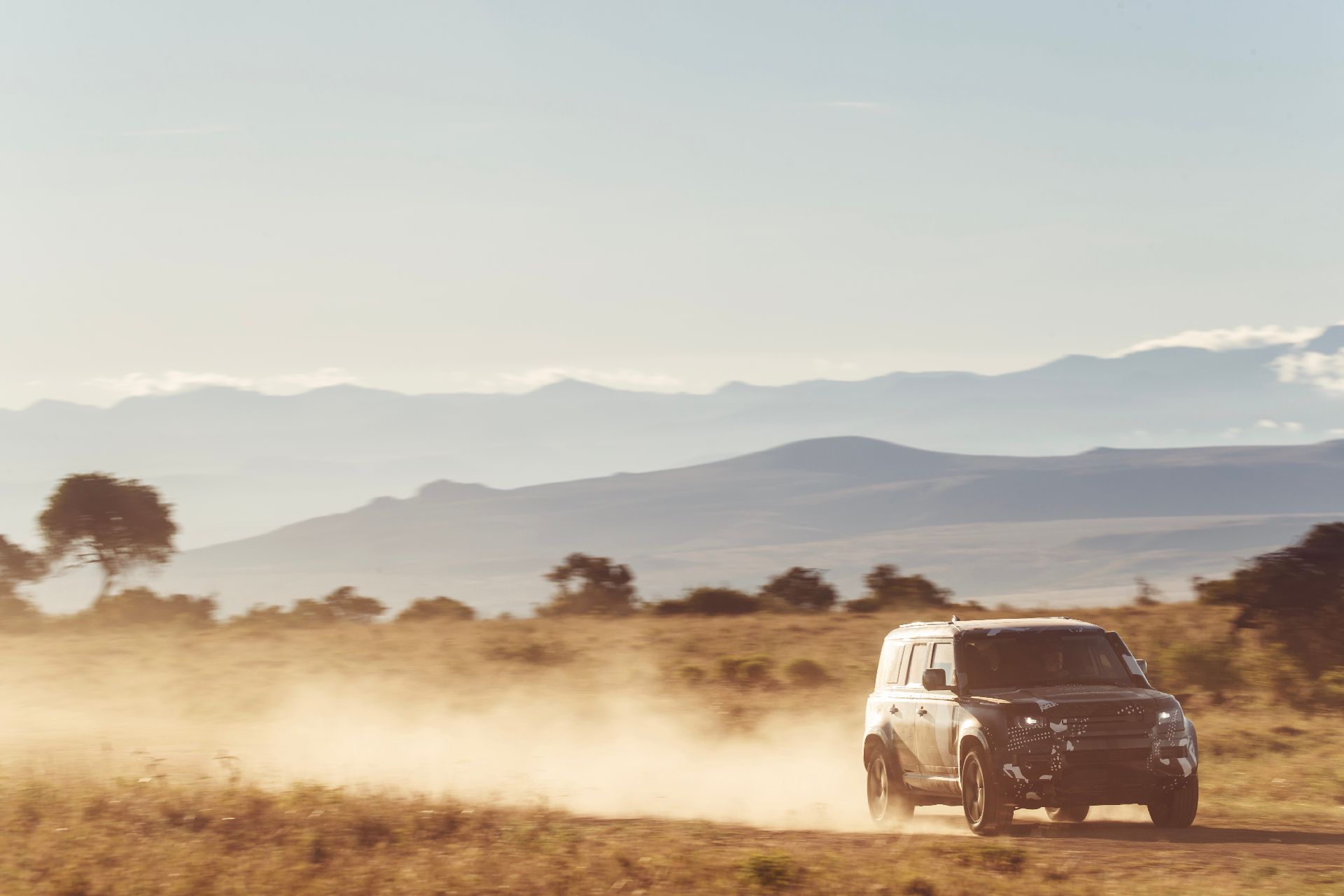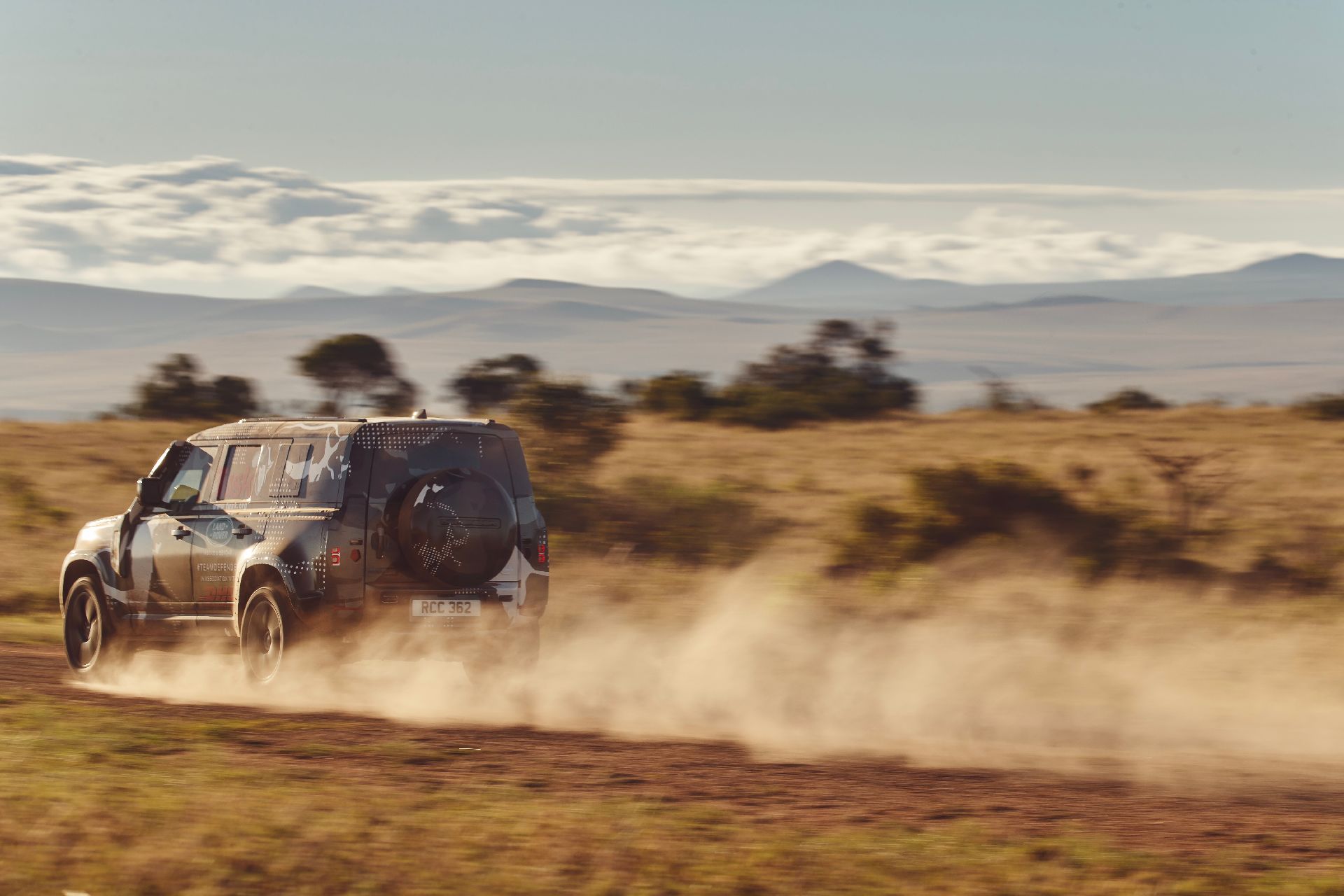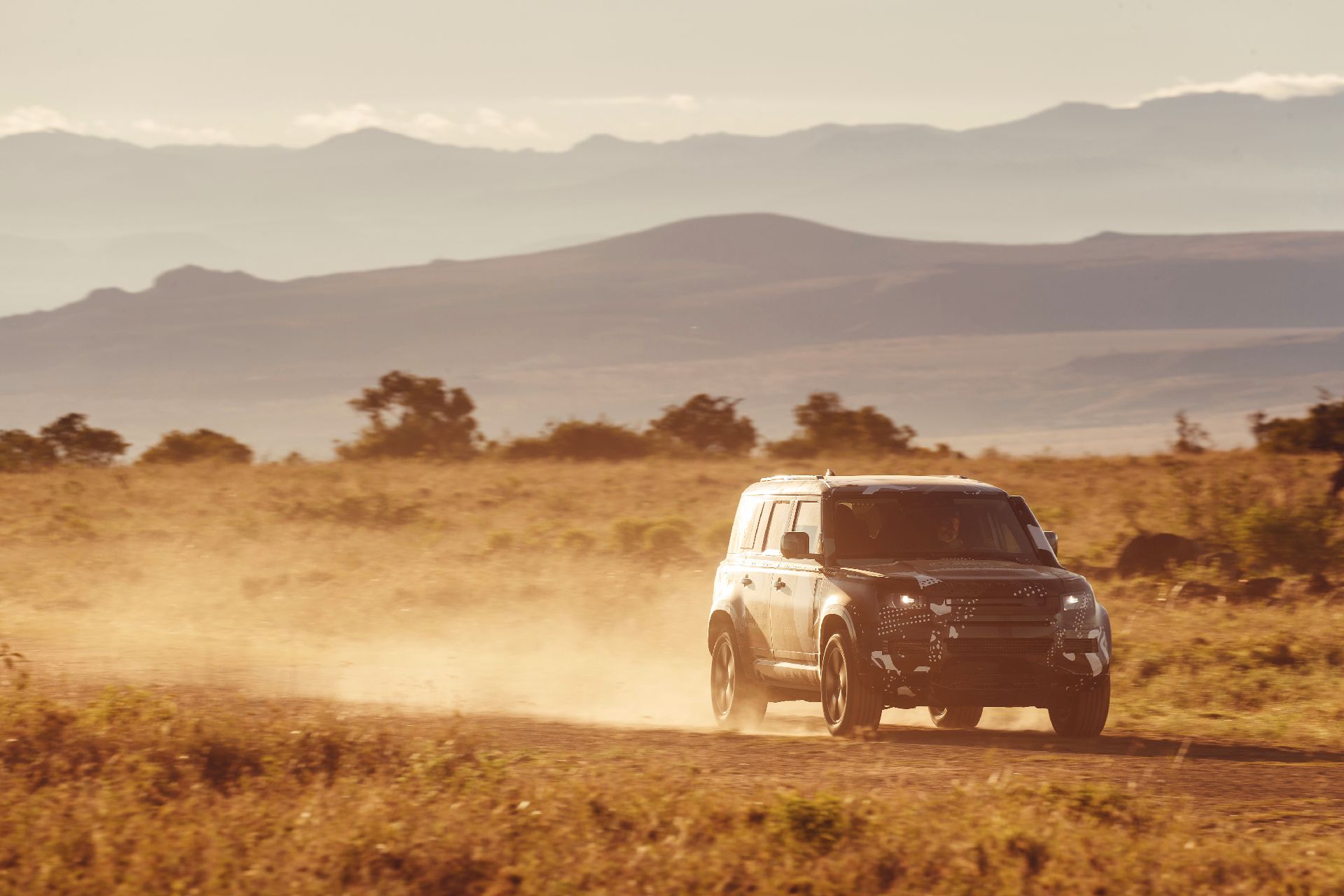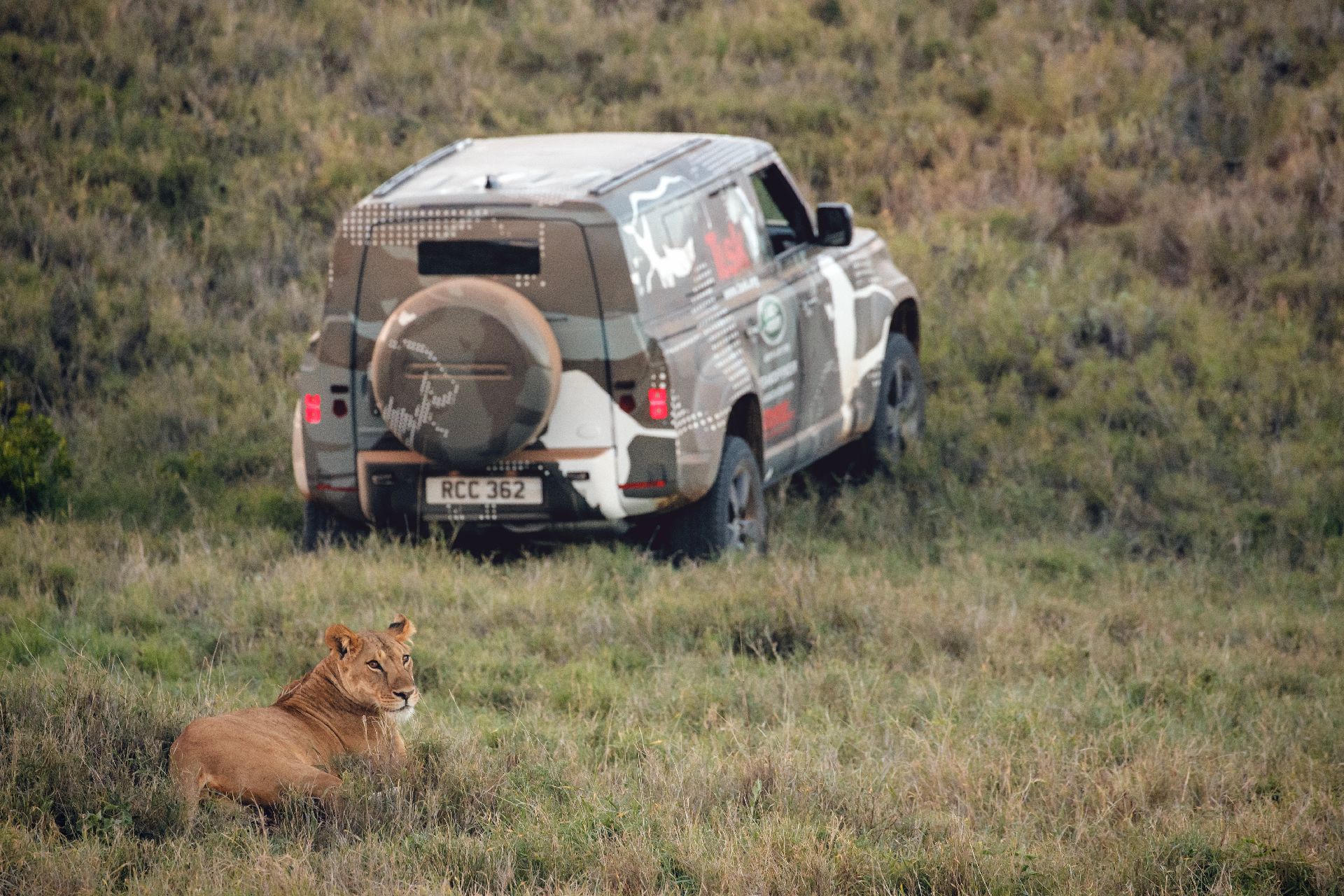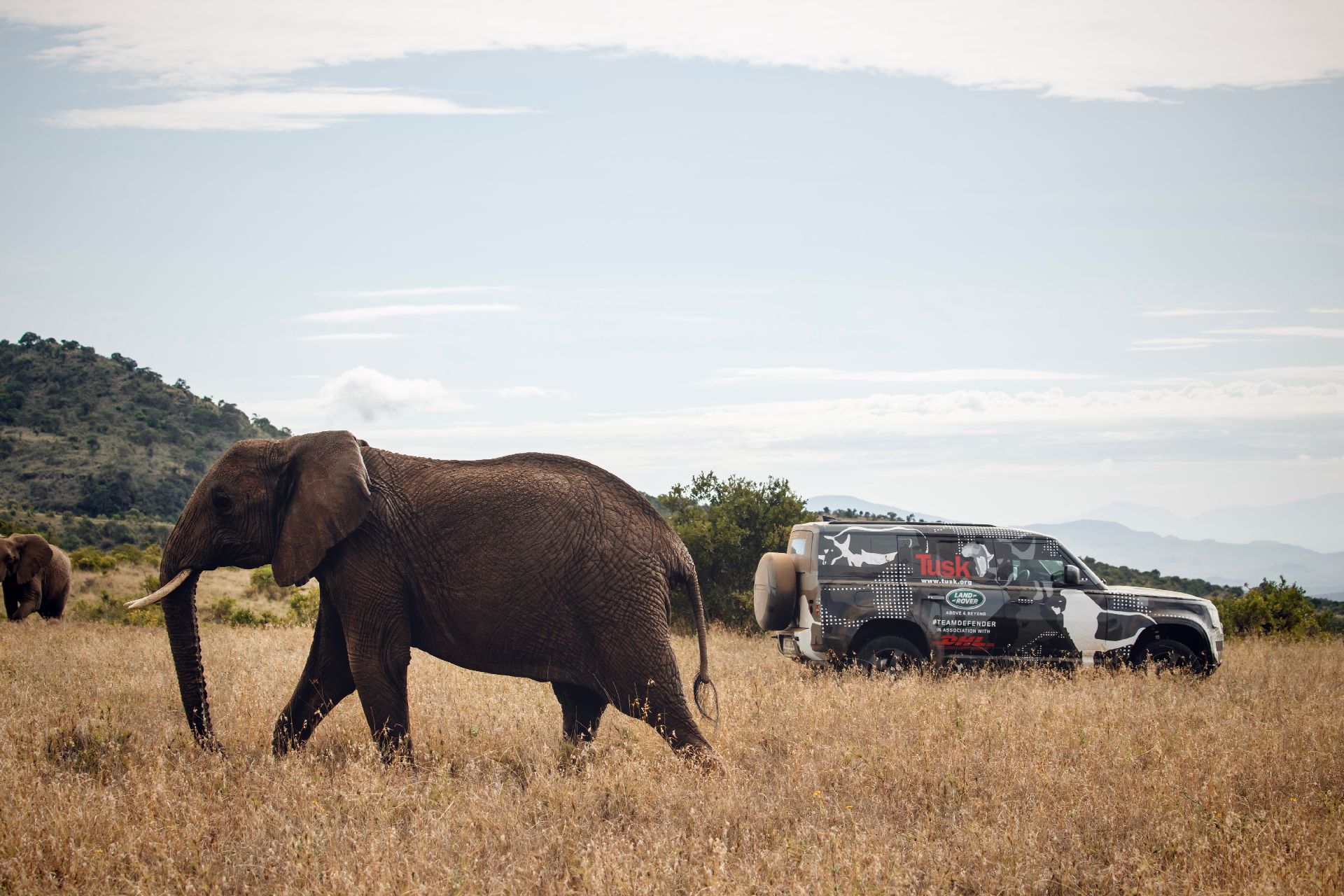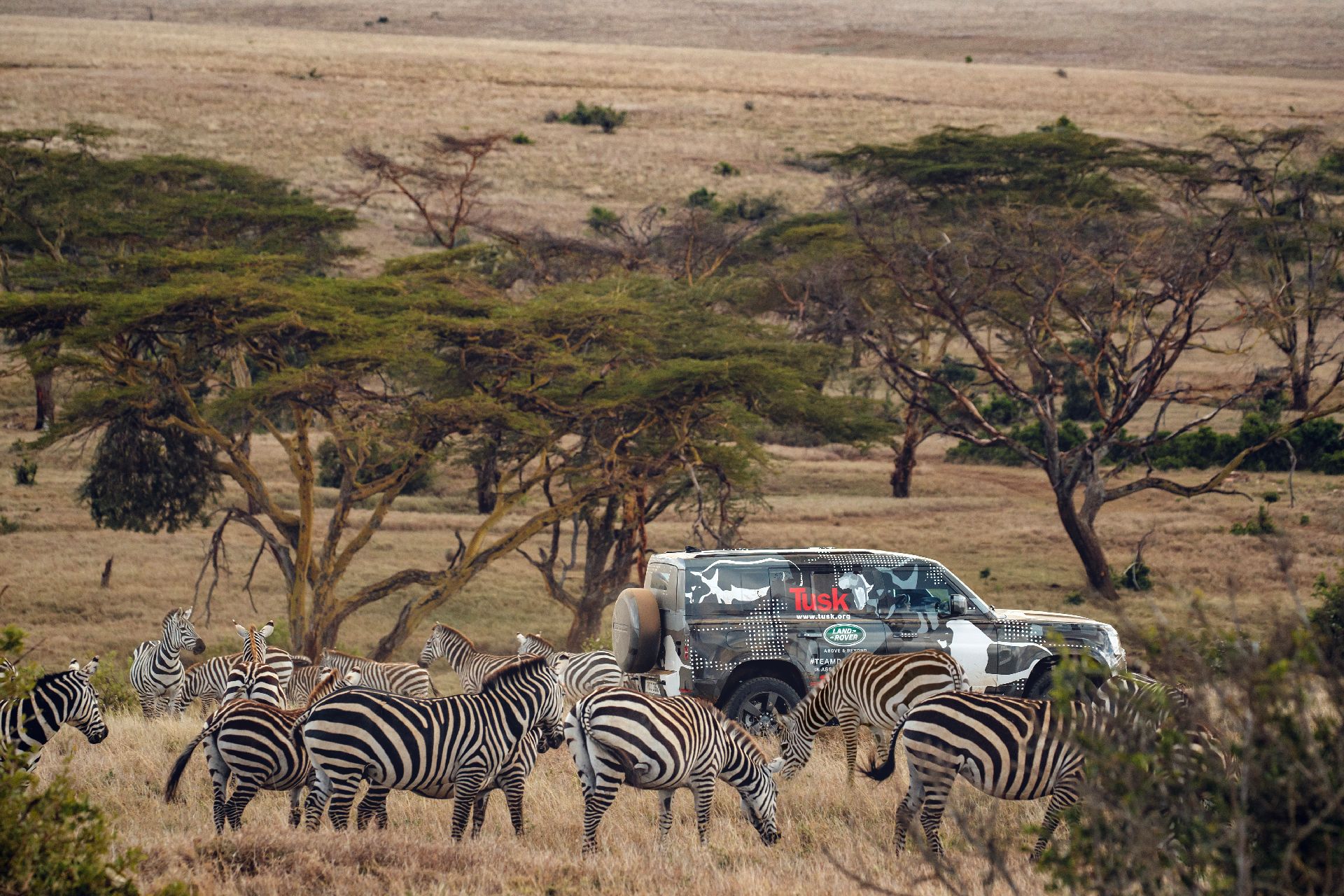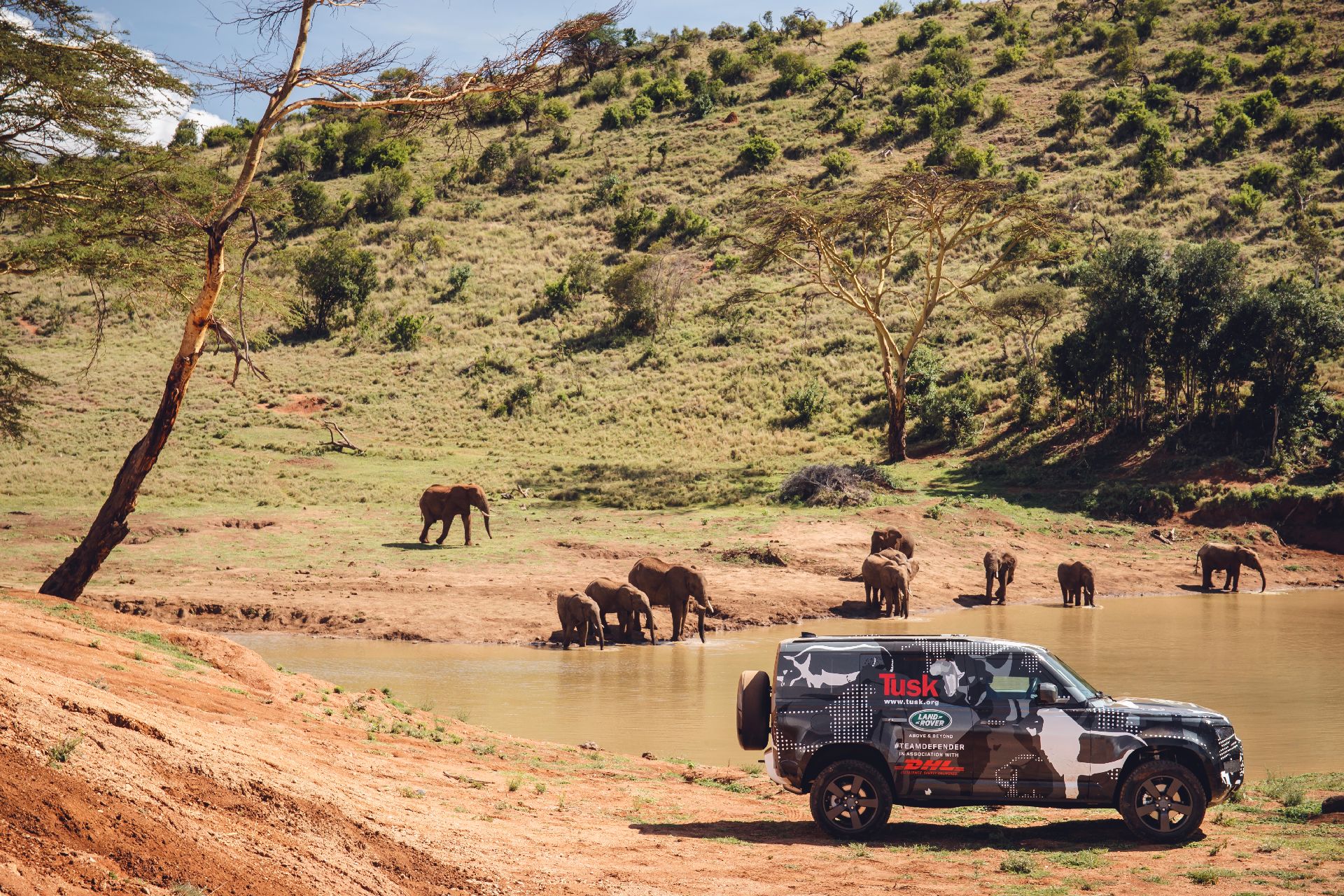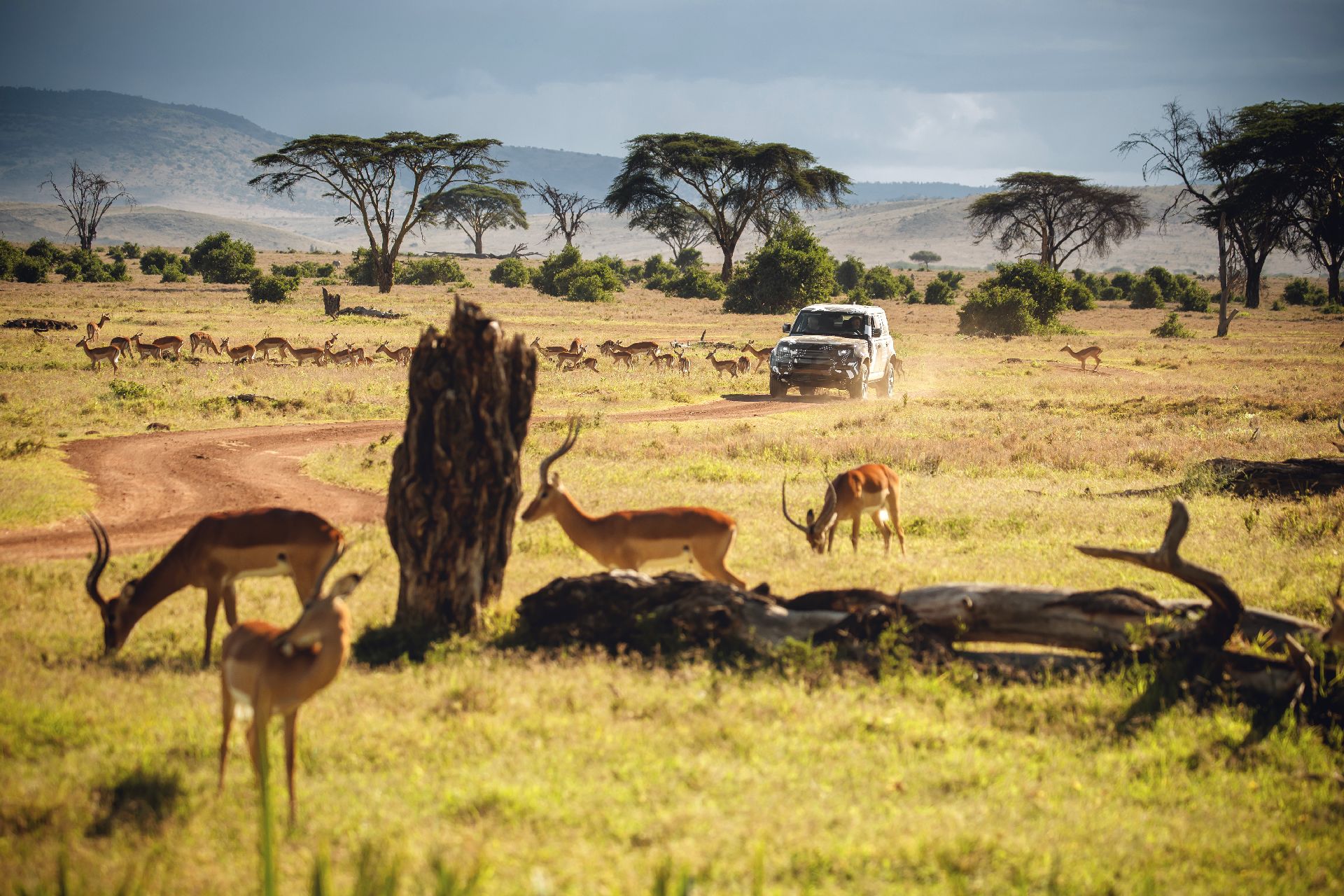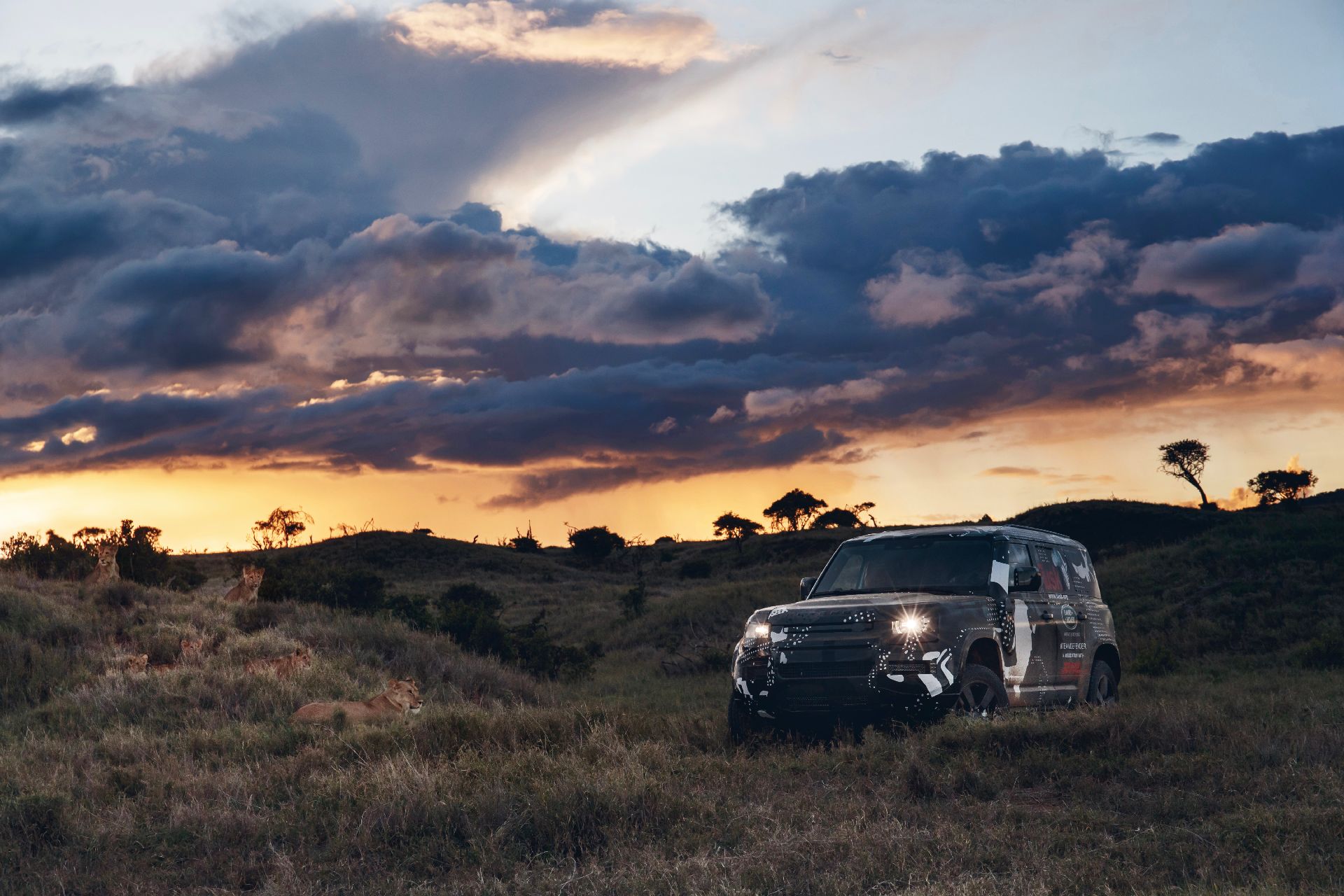Land Rover recently wrapped up a round of testing the 2020 Defender in Kenya – and, in the process, did its part for lion conservation as well.
In the unique testing program, the new Land Rover Defender was driven by operatives from Tusk, an African initiative focused on the conservation of animals throughout Kenya. The Defender was put through a series of tests, including pulling heavy loads and tracking radio-collared lions throughout the 14,000-hectare Borana Conservancy.
This area proved to be a good place to test the 2020 Defender thanks to the abundance of rutted tracks, rocky inclines, muddy river banks and thick forests.
Also Read: 2020 Land Rover Defender: What It’ll Look Like, Tech & Everything Else We Know
“We are now in the advanced stages of the new Defender’s testing and development phase. Working with our partners at Tusk in Kenya enabled us to gather valuable performance data,” Jaguar Land Rover vehicle line director Nick Collins said. “The Borana reserve features a wide range of challenging environments, making it a perfect place to test to the extreme the all-terrain attributes of the new Defender.”
The all-new Defender, codenamed L851, will be underpinned by a modified version of the MLA platform used by the Range Rover Sport and Land Rover Discovery. Styling inspiration is set to be taken from both the new Discovery and the DC100 concepts from 2011. Powertrains thought to be in the works include 2.0-liter four-cylinder petrol and diesel units as well as a potential petrol-electric hybrid.
“This year marks Tusk’s Year of the Lion. Our aim is to raise awareness of the alarming decline in lion populations across Africa,” Tusk chief executive Charles Mayhew added about the vehicle’s Kenyan adventure. “Fortunately, within the Borana Conservancy, there are a number of prides of lion and tracking and monitoring their movements across this vast and tough environment is vital in order to protect them and reduce any conflict with neighboring communities. The new Defender took everything in its stride, from deep river wading to climbing rocky trails.”




